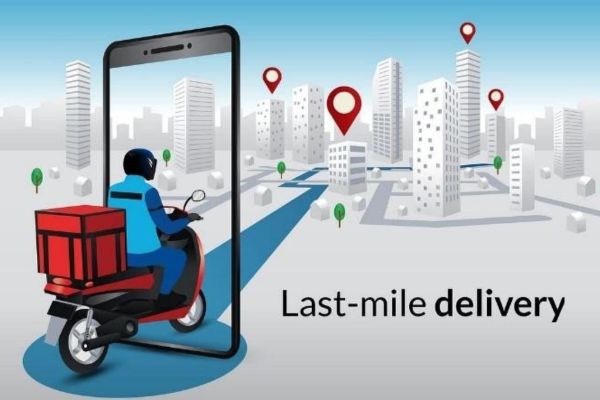The global last mile delivery market was valued at USD 178.64 billion in 2024 and is expected to reach approximately USD 484.62 billion by 2034, expanding at a CAGR of 10.49% from 2025 to 2034. This impressive growth is primarily fueled by the rapid rise of e-commerce, evolving consumer expectations, and significant technological advancements.
The COVID-19 pandemic accelerated online shopping trends, creating a surge in demand for fast, reliable, and safe delivery solutions. Retailers and logistics providers responded by optimizing last-mile operations through hyperlocal delivery hubs, crowdsourced fleets, and automated systems.
Consumer demand for same-day or two-hour deliveries has led to rapid investment in quick commerce (Q-commerce) models, which prioritize the ultra-fast delivery of groceries, meals, and daily essentials. Urbanization, along with the growing need for contactless delivery, has transformed last-mile logistics into a critical business differentiator.
Technological innovations are central to this transformation. Companies are increasingly deploying AI-based route optimization, real-time tracking, and autonomous delivery solutions such as drones, robots, and driverless trucks to reduce costs and enhance efficiency. Environmental concerns are also encouraging the adoption of electric vehicles (EVs) and bicycle couriers, particularly in urban areas with strict emission standards.
Additionally, gig economy platforms like Amazon Flex and Uber Eats are creating scalable and flexible delivery networks. Emerging economies across Asia, Latin America, and Africa are witnessing rapid growth, supported by improved digital infrastructure and mobile penetration. With continued investments in automation, sustainability, and smart logistics, the last mile delivery sector is poised for strong growth in the coming years.
Key Highlights
- North America led the market with a 35.84% share in 2024.
- Europe followed with a 27.33% share.
- B2B service type dominated with a 70.51% market share.
- Standard delivery led the delivery model segment with 56.17% share.
- Autonomous vehicles held a commanding 96.42% share in technology adoption.
- E-commerce & retail was the leading end-use industry, accounting for 53.92% of revenue.
Importance of Last Mile Delivery Market
1. Enhances Customer Experience
- Last mile delivery is the final touchpoint between the business and the consumer.
- Fast, reliable, and accurate deliveries influence brand loyalty and repeat purchases.
- Consumers now expect same-day or even two-hour delivery, making this stage a key differentiator in the market.
2. Drives E-commerce Growth
- With the rise of online shopping, last mile logistics has become a foundation for e-commerce success.
- It supports services like Q-commerce (quick commerce) and hyperlocal delivery, essential for groceries, fashion, electronics, and more.
3. Supports Urbanization and Smart Cities
- Efficient last mile logistics helps reduce urban congestion, traffic emissions, and delivery bottlenecks.
- It enables smart city initiatives through electric vehicles (EVs), bike couriers, and drone deliveries in high-density areas.
4. Fosters Innovation and Technological Advancement
- The sector drives adoption of AI route optimization, autonomous vehicles, drones, and real-time tracking.
- Investment in smart logistics tech is reshaping how goods are stored, routed, and delivered.
5. Improves Operational Efficiency
- Streamlining the last mile reduces costs tied to delivery failures, returns, and idle time.
- Companies can enhance their supply chain visibility and inventory control.
6. Crucial in Healthcare and Emergency Logistics
- Timely last mile delivery is essential for critical medical supplies, temperature-sensitive pharmaceuticals, and disaster response.
- It’s vital for remote and underserved areas where infrastructure is limited.
7. Creates Employment Opportunities
- The gig economy model has expanded rapidly, providing flexible income through platforms like Amazon Flex, DoorDash, and Rappi.
- It’s also boosting small logistics startups and regional delivery services.
8. Supports Global Expansion
- Businesses entering emerging markets depend on efficient last mile networks to reach rural or infrastructure-challenged areas.
- It enables cross-border e-commerce growth by bridging the “final gap” to the customer.
Segmental Analysis
Service Type
- B2C (Business-to-Consumer) deliveries dominated in 2024, driven by the expansion of online retail and consumer demand for fast and secure home deliveries. Major e-commerce players like Amazon, Flipkart, and Alibaba continue to invest in localized warehousing, route optimization, and delivery fleets.
- C2C (Customer-to-Customer) deliveries, while smaller in volume, are growing steadily due to the popularity of peer-to-peer marketplaces such as OLX, eBay, and Facebook Marketplace. Logistics startups are addressing this niche with cost-effective and flexible delivery solutions.
Delivery Model
- Standard Delivery remains the most widely used model, offering reliability and cost-effectiveness for non-urgent packages. It is especially prevalent in suburban and rural areas where faster delivery options are limited.
- Instant Delivery is the fastest-growing segment in 2024, spurred by consumer demand for ultra-fast fulfillment. Startups like Zepto and Blinkit are redefining expectations with 10–30-minute deliveries, primarily in grocery and FMCG categories.
Technology
- Non-autonomous vehicles—such as human-driven bikes, vans, and scooters—continue to dominate due to their flexibility and scalability across varied terrains and regulations.
- Drone delivery is the fastest-growing technology, finding increasing use in healthcare, remote deliveries, and emergency logistics. Companies like Zipline and Amazon Prime Air are pioneering drone services, especially in regions with difficult terrain or poor infrastructure.
End-User Industry
- E-commerce & Retail remains the largest end-use sector. Online retailers are leveraging localized storage, AI-driven logistics, and hybrid delivery models to meet growing demand, especially during peak shopping periods.
- Healthcare & Pharmaceuticals is the fastest-growing segment, driven by the need for timely, temperature-controlled delivery of medical supplies, vaccines, and medicines. Post-COVID innovations have led to investments in cold-chain logistics and last-mile healthcare delivery infrastructure.
Regional Analysis
North America
- 2024 Market Size: USD 64.02 billion
- 2034 Projection: USD 173.69 billion
- North America leads the global last mile delivery market thanks to its mature e-commerce sector, high consumer expectations, and significant investments in automation and sustainable delivery. Companies like Amazon are at the forefront, having invested over USD 1 billion in same-day delivery capabilities in 2024 alone.
Asia-Pacific
- 2024 Market Size: USD 48.82 billion
- 2034 Projection: USD 132.45 billion
- Asia-Pacific is the fastest-growing region, with booming e-commerce activity, mobile-first consumers, and tech-forward logistics startups. Countries like China, India, and Indonesia are embracing AI-driven delivery systems, micro-fulfillment centers, and 10-minute delivery models.
Europe
- 2024 Market Size: USD 42.71 billion
- 2034 Projection: USD 115.87 billion
- Europe continues to lead in sustainable last-mile delivery, emphasizing electrification, low-emission urban logistics, and ESG compliance. Cities like Amsterdam and Paris are global pioneers in green logistics, and DHL has deployed over 20,000 electric vehicles across the continent.
LAMEA (Latin America, Middle East, and Africa)
- 2024 Market Size: USD 23.08 billion
- 2034 Projection: USD 62.61 billion
- The LAMEA region is showing rising potential. Latin America is seeing robust investment from players like Mercado Libre, which allocated USD 1.6 billion in 2024 to expand logistics operations in Brazil. Meanwhile, the Middle East is exploring advanced technologies like drone corridors and AI hubs, and Africa is leveraging mobile-based gig platforms to improve rural access.
Access Full Report@ https://www.cervicornconsulting.com/buy-now/2625
















